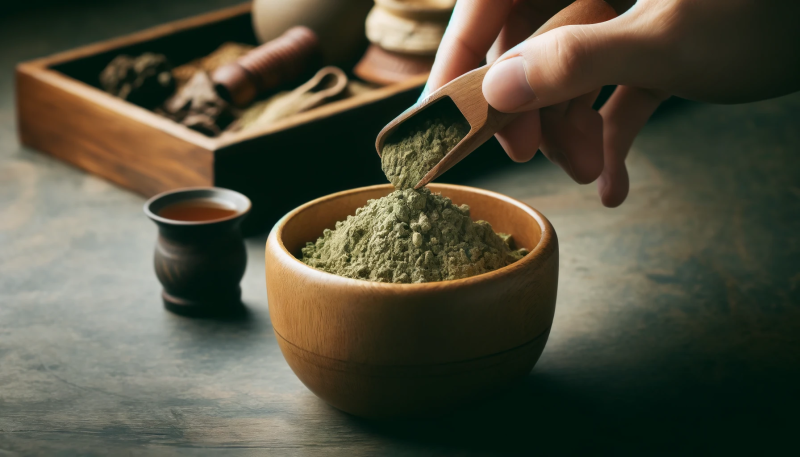7 minuten leestijd
What is Kanna?

Origin of Kanna
Kanna, a plant native to beautiful South Africa, is known for its unique properties and versatile applications. This green friend grows abundantly in the wild of South Africa and plays a significant role in the culture of the country. From traditional use to modern applications, Kanna has found its way into various aspects of life.
Active Ingredients of Kanna
Kanna contains various alkaloids, with mesembrine being the most well-known. These substances are responsible for the unique properties Kanna offers. The chemical composition of Kanna makes it an interesting subject for much research and curiosity. Mesembrine is one of the primary alkaloids in Kanna, and it plays a crucial role in the plant's effects.
Methods of Consuming Kanna
There are various ways to consume Kanna. From traditional tea to modern capsules, there is something for everyone. Some people choose to use Kanna in powder form, while others prefer capsules or extracts. Each of these methods has its unique benefits. If you want to learn more about the different forms of Kanna, take a look at Kanna and Kanna Extract. For a comprehensive guide on how to use Kanna, you can read this blog article.
What is Kratom?

Origin of Kratom
Kratom is a plant native to the tropical forests of Southeast Asia. This region is known for its rich biodiversity. Kratom is valued for its versatility and the various ways it can be consumed. The tropical environment of Southeast Asia provides the perfect conditions for the growth of Kratom.
Active Ingredients of Kratom
The main alkaloids in Kratom are mitragynine and 7-hydroxymitragynine. These substances contribute to the characteristic properties of Kratom. Kratom has a complex chemical structure that makes it a fascinating subject for scientists and enthusiasts. These alkaloids are responsible for the unique properties of Kratom.
Methods of Consuming Kratom
Kratom can be consumed in various ways, including powder, capsules, and tea. This makes it a versatile choice for many people. Some prefer powder form, while others opt for capsules or extracts. More information about the different types and forms of Kratom can be found here: Kratom, Green Kratom, Yellow Kratom, Red Kratom, White Kratom, and Extract.
View our assortment of kanna and kratom here!
Comparison of Kanna and Kratom
Chemical Composition
Both plants have unique chemical profiles that contribute to their respective properties. Kanna primarily contains mesembrine, while Kratom is known for mitragynine and 7-hydroxymitragynine.
| Plants | Active Substances |
|---|---|
| Kanna | Mesembrine |
| Kratom | Mitragynine |
Effects on Body and Mind
Kanna and Kratom have different effects on the body and mind, depending on the dosage and form of administration. Kanna can initially provide a slight energetic boost and then has calming and mood-enhancing effects. Kratom, on the other hand, can have both energetic and relaxing effects, depending on the type and dosage.
| Plants | Effects |
|---|---|
| Kanna | Energetic, calming, mood-enhancing |
| Kratom | Energetic or relaxing, depending on type and dosage |
Why Are Kanna and Kratom Compared?

It is true that Kanna and Kratom are often compared because their effects can be similar, depending on the type and dosage. For example, Kanna can initially provide a slight energetic boost, followed by calming and mood-enhancing effects. Kratom, on the other hand, can have both energetic and relaxing effects, depending on the type and dosage.
| Comparison |
|---|
| Slight energetic boost |
| Calming effects |
| Mood-enhancing |
| Energetic or relaxing, depending on dosage |
While the effects of Kanna and Kratom can sometimes be similar, it is important to understand that they are two different botanical products with their own unique properties and chemical compositions. Therefore, these plants should not be directly compared regarding their origin and specific use.
Conclusion
Although Kanna and Kratom are often compared due to their similar effects, they are essentially two very different herbs with their unique characteristics. Kanna offers a combination of an energetic boost and calming, mood-enhancing effects, while Kratom can have both energetic and relaxing effects, depending on the type and dosage.
Both plants have different chemical compositions and are consumed in different ways. This highlights that, despite their similar effects, Kanna and Kratom should be considered unique, separate botanical products. Their versatility in use and application makes them both interesting, but it is essential to recognize that they cannot be directly compared due to their distinct botanical nature and chemical properties.


